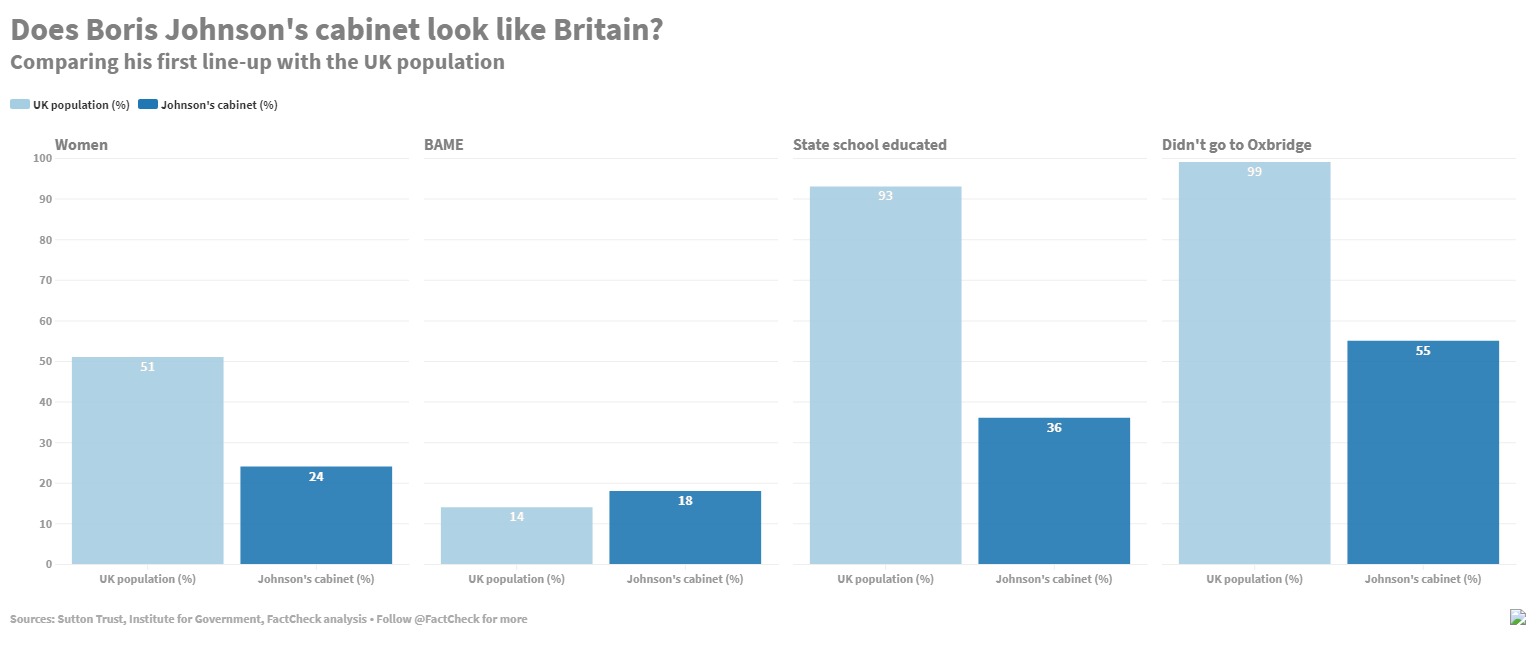Boris Johnson has given 33 MPs a seat round the cabinet table. But does his first frontbench look like the wider population?
Along with other analysts, we’re going to look at the demographics of people attending cabinet — that includes secretaries of state, ministers without portfolio and other key government roles.
Gender balance
There are more women in Mr Johnson’s cabinet than there were in Theresa May’s last line-up (eight vs six).
But as a percentage of cabinet attendees, women’s representation has dropped from 27 per cent to 24 per cent — and is way below the wider UK population, of which women make up 51 per cent.
Ethnic minority members
There are more black and minority ethnic (BAME) MPs at the top table than ever before, according to the independent Institute for Government think tank.
The last census in 2011 found that 14 per cent of the population of England and Wales were not white. Mr Johnson’s first cabinet goes beyond that, with 18 per cent of attendees from an ethnic minority background.
Education
Only 7 per cent of Brits were privately educated, but a massive 64 per cent of Mr Johnson’s cabinet went to fee-paying schools, according to analysis by the Sutton Trust.
That includes four Etonians: Mr Johnson, his brother Jo, business minister Kwasi Kwarteng, and Commons leader Jacob Rees-Mogg.
To no-one’s great surprise, Oxford and Cambridge alumni feature heavily in Mr Johnson’s top team. Some 55 per cent of cabinet attendees went to the elite universities, compared to less than one per cent of the wider population.




